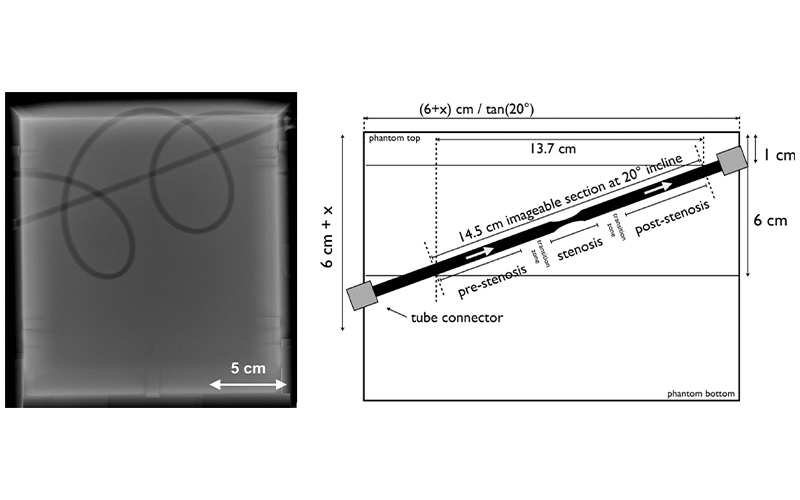3D Ultrasound Enables Accurate, Noninvasive Measurements of Blood Flow
3D approach could increase ease of data collection

A 3D ultrasound (US) system provides an effective, noninvasive way to estimate blood flow that retains its accuracy across different equipment, operators and facilities, according to a study published in Radiology.
Measures of blood flow are important in helping clinicians determine how much oxygen and nutrient-carrying blood is reaching organs and tissues in a patient’s body. In emergency situations, accurate blood flow measurements can show if there is adequate blood supply to organs like the heart and brain. Blood flow measurements are important in chronic conditions too, as in the cases of measuring blood flow to the feet and lower limbs of people with diabetes.
Despite its importance, there is no ideal way to measure blood flow noninvasively and inexpensively. Current methods like blood pressure and 2D US provide only surrogate metrics rather than the desired volumetric flow or have substantial limitations and are prone to errors. True flow measurements with 2D US are rarely used clinically due to reliability issues and cumbersome implementation. In addition, results often vary considerably between facilities and operators. Measurements from an experienced US technologist might differ significantly from those of a less experienced one.
“Right now, we just don’t have anything better to quantify blood flow,” said study lead author Oliver D. Kripfgans, PhD, associate professor of radiology from the Department of Radiology at Michigan Medicine in Ann Arbor, Michigan.
Simplicity of 3D Approach Could Improve Accuracy of Results
Dr. Kripfgans and his Michigan Medicine colleagues J. Brian Fowlkes, PhD, Stephen Z. Pinter, PhD, and Jonathan M. Rubin, MD, PhD, have spent years developing and studying a 3D approach for quantitatively measuring blood flow. For the new study, he and his colleagues, along with other volunteers involved in the Quantitative Imaging Biomarkers Alliance (QIBA), tested this 3D approach on three clinical scanners using a custom flow phantom. They used seven different laboratories and manipulated the testing conditions by changing flow rate, imaging depth and other parameters for a total of eight distinct testing conditions.
The results showed that blood volume flow estimated by 3D color-flow US was accurate and reproducible among the seven laboratories.
"We had less than 10% error or variation,” Dr. Kripfgans said. “For some of the systems, we were down to only 3% to 5% difference between labs. These are fantastic results that show that, from a technology point of view, some systems could be ready to go to the clinic.”
Dr. Kripfgans credited the simplicity of the 3D approach, ease of data collection and elimination of assumptions plaguing other methods for minimizing the variation in results between users and systems. That simplicity, coupled with the availability of 3D on many existing USsystems, is likely to hasten its arrival to clinical medicine, Dr. Kripfgans said.
"Once the technique becomes available commercially on scanners, clinical adoption will be much faster because then it’s not a research project anymore, it’s something that’s readily available, and after that it’s just a matter of time before it reaches the clinic,” he said.
QIBA, an alliance of researchers, health care professionals and industry representatives, was organized by RSNA in in 2007 to improve current biomarkers and investigate new ones.
The QIBA initiative includes collaboration to identify needs, barriers and solutions to create consistent, reliable, valid and achievable quantitative imaging results across imaging platforms, clinical sites and time. QIBA aims to accelerate development and adoption of hardware and software standards to achieve accurate and reproducible quantitative results from imaging methods.
“Because of QIBA and this study I’m confident that this 3D ultrasound technology is on a path to the clinic,” Dr. Kripfgans said.
For More Information
Access the Radiology study, “Three-dimensional US for Quantification of Volumetric Blood Flow: Multisite Multisystem Results from within the Quantitative Imaging Biomarker Alliance.”
Read the accompanying editorial.
